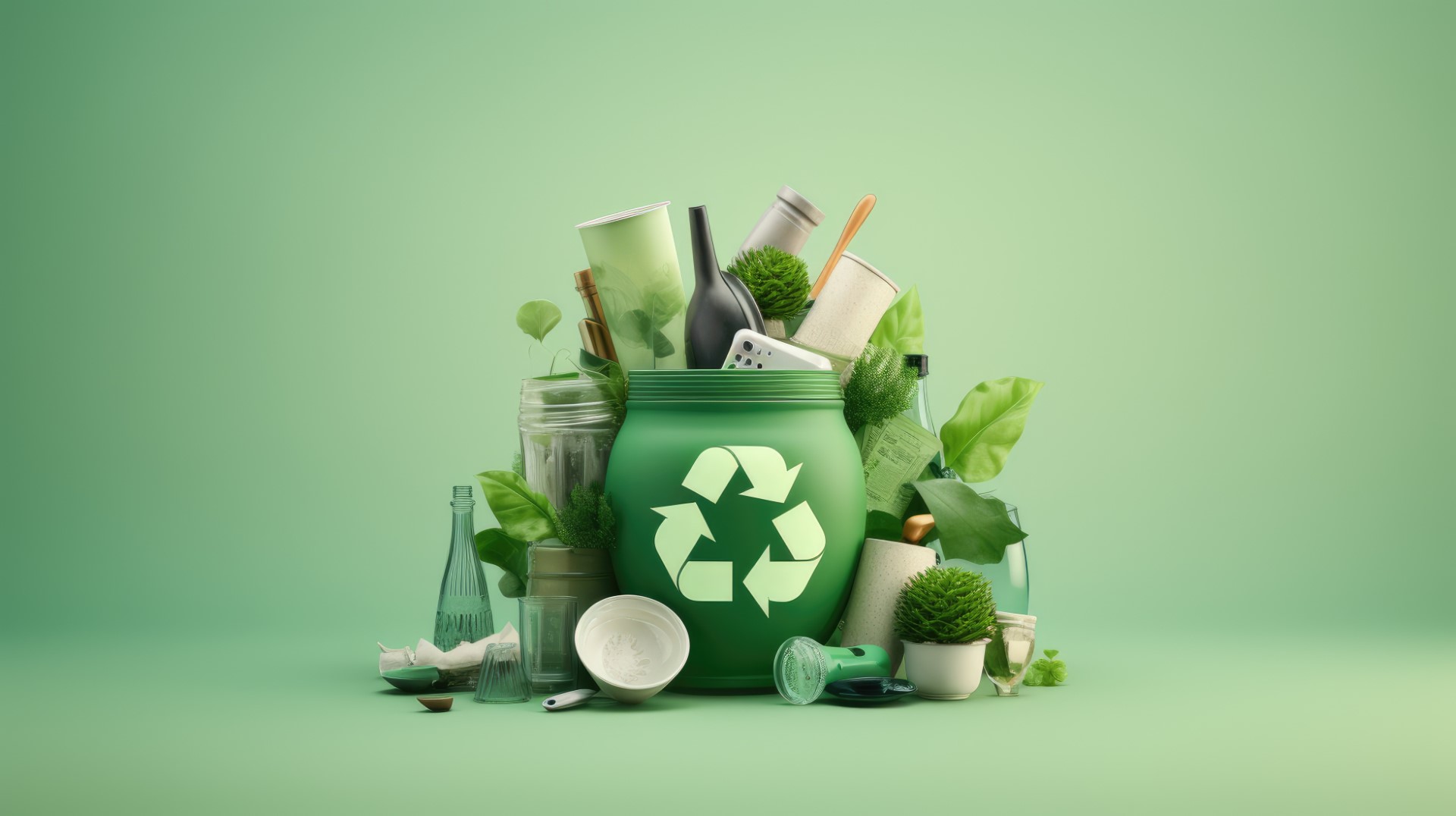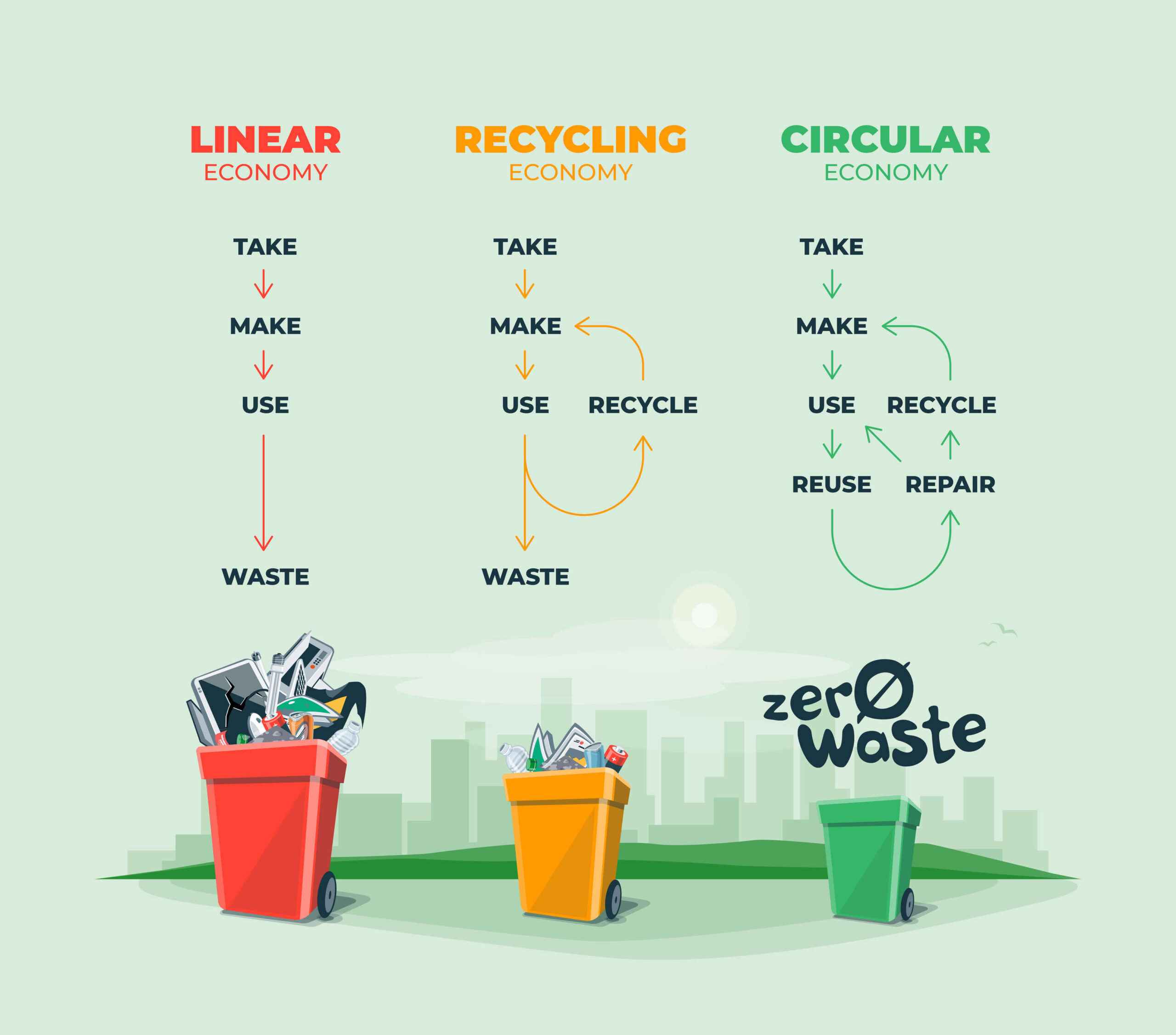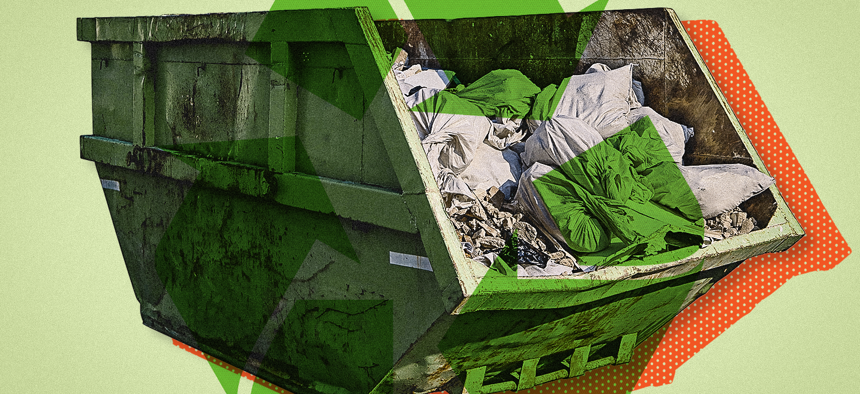Why Choose Recycling Lives Services for Your Waste Administration Requirements
Why Choose Recycling Lives Services for Your Waste Administration Requirements
Blog Article
Checking Out Different Sorts Of Waste in Modern Waste Management Systems
The modern landscape of waste monitoring includes navigating an intricate selection of waste types, each needing specialized handling and disposal methods to minimize environmental impacts. Community strong waste, harmful waste, digital waste, and organic waste each existing unique difficulties and chances for resource recovery.
Metropolitan Solid Waste
Municipal strong waste, usually described as family trash or garbage, encompasses a variety of discarded products created by domestic, commercial, and institutional resources within a town. This waste stream generally consists of items such as product packaging, food scraps, lawn trimmings, paper, plastics, fabrics, and disposed of family products. The management of metropolitan strong waste is a critical element of metropolitan preparation and public health, requiring efficient collection, transportation, and disposal systems.
Effective waste management systems are made to minimize environmental impact while making best use of resource healing. This commonly includes a combination of strategies including composting, landfilling, and recycling. Reusing programs target materials like paper, glass, metals, and particular plastics, diverting them from landfills and reestablishing them right into the manufacturing cycle. Composting organic waste, such as food scraps and lawn trimmings, not only lowers land fill use however also creates valuable soil modifications.
Communities need to also attend to the logistical and financial obstacles related to waste administration. Executing pay-as-you-throw systems, boosting public awareness, and buying modern technology can significantly enhance waste diversion prices. By integrating these practices, municipalities can cultivate sustainable communities, decrease greenhouse gas discharges, and conserve natural deposits.
Hazardous Waste

Efficient unsafe waste administration entails a number of critical actions: recognition, treatment, segregation, and disposal. Identification entails the classification of waste based upon its unsafe residential or commercial properties. Partition ensures that dangerous materials are saved separately from non-hazardous waste to avoid cross-contamination. Therapy techniques, such as chemical neutralization, incineration, and stablizing, are employed to reduce the toxicity, volume, or movement of the waste. Disposal options, including safe garbage dumps and below ground storage, are chosen to make sure lasting containment.
Regulative structures, such as the Source Preservation and Recovery Act (RCRA) in the United States, offer standards and criteria for contaminated materials management. Adherence to these policies, combined with advancements in waste therapy innovations, is crucial in mitigating the risks connected with dangerous waste.
Digital Waste
Digital waste, commonly referred to as e-waste, represents a swiftly expanding difficulty in waste monitoring systems around the world. This kind of waste includes disposed of electronic gadgets and equipment such as smart devices, computer systems, tvs, and other digital appliances. The fast rate of technical advancement, combined with reducing item life-spans and customer need for the newest gadgets, has actually exponentially enhanced the quantity of e-waste generated each year.
E-waste is especially troublesome due to its complex structure, frequently including harmful substances like lead, cadmium, and mercury, which position considerable environmental and health and wellness threats if not effectively managed. Alternatively, e-waste also has important products such as gold, copper, and silver, which can be recovered and recycled. The dual nature of e-waste-- both valuable and dangerous-- requires specialized handling, recycling, and disposal procedures.
Efficient e-waste management includes stringent regulative structures, durable collection systems, and advanced recycling innovations. Public recognition and involvement are critical, as inappropriate disposal methods, such as read review unlawful unloading and informal recycling, exacerbate ecological contamination and carcinogen. Improving e-waste administration methods is important for minimizing ecological impact and recuperating beneficial resources in an increasingly electronic globe.

Organic Waste
Organic waste, making up kitchen scraps, yard trimmings, and agricultural deposits, stands for a substantial section of the global waste stream. This sort of waste is eco-friendly, meaning it can be damaged down by bacteria right into easier organic substances. Despite its possibility for all-natural decomposition, improper administration of natural waste can cause unfavorable environmental effects, including the emission of greenhouse gases such as methane, which add to climate modification.
Effective administration of organic waste is critical for reducing these ecological effects (recycling lives services). Composting is look these up a widely adopted approach, changing natural waste into nutrient-rich garden compost that can improve soil health and farming performance. In addition, anaerobic digestion is an emerging technology that transforms natural waste right into biogas, a sustainable power source, and digestate, which can be used as plant food
Municipalities and waste administration entities should carry out robust organic waste collection and therapy programs to take full advantage of the advantages of these procedures. Public education campaigns can also play a pivotal role in encouraging houses and organizations to separate organic waste from various other sorts of waste. By focusing on the administration of natural waste, societies can decrease landfill usage, reduced greenhouse gas emissions, and create beneficial byproducts for agricultural use.

Innovative Waste Monitoring
In the world of waste monitoring, ingenious methods are transforming how cultures manage their refuse, intending for sustainability and efficiency. One popular technology is the execution of clever waste containers furnished with sensors that keep an eye on fill levels and optimize collection routes.
Another notable development is the adoption of waste-to-energy (WtE) technologies. By transforming non-recyclable waste right into functional energy through processes such as incineration and anaerobic digestion, WtE reduces landfill burden and offers a renewable resource source. Developments in chemical recycling allow for the break down of intricate plastics into their initial monomers, enabling the development of brand-new, premium plastic products.
Furthermore, the round economic climate version is acquiring grip, emphasizing the style of products and systems that focus on reusability and resource effectiveness. This holistic approach urges markets to decrease waste generation from the beginning. Via these ingenious techniques, modern-day waste administration systems are not click to find out more just attending to the immediate obstacles of waste disposal yet additionally paving the way for an extra lasting future.
Conclusion
An extensive understanding of metropolitan solid waste, hazardous waste, digital waste, and natural waste, paired with the execution of innovative waste administration options, is necessary for mitigating environmental effects. Incorporating modern technologies such as clever waste bins and waste-to-energy systems can boost efficiency and sustainability. Efficient waste management methods not just foster resource recovery yet also advertise public recognition and involvement, ultimately adding to the advancement of a round economic situation.
The contemporary landscape of waste monitoring includes navigating a complicated selection of waste kinds, each requiring specialized handling and disposal techniques to mitigate environmental influences. Local strong waste, hazardous waste, digital waste, and natural waste each existing distinctive obstacles and possibilities for source recovery.Electronic waste, typically referred to as e-waste, represents a quickly expanding obstacle in waste monitoring systems globally. With these innovative methods, modern-day waste administration systems are not only dealing with the immediate obstacles of waste disposal however likewise leading the method for a more lasting future.
A thorough understanding of local solid waste, unsafe waste, digital waste, and organic waste, paired with the application of ingenious waste administration services, is vital for minimizing environmental effects. (recycling lives services)
Report this page